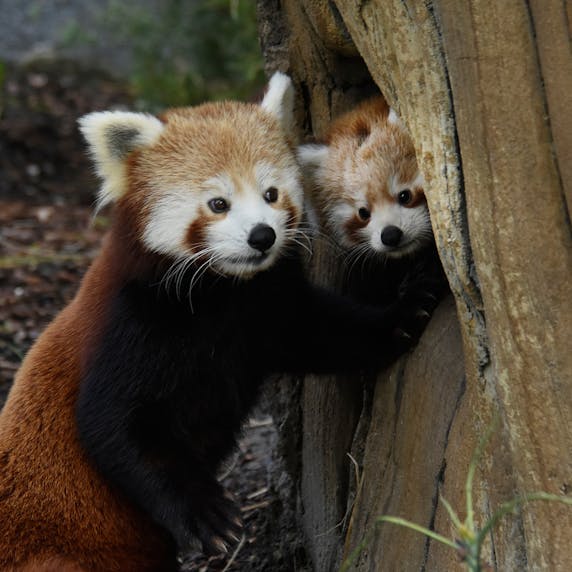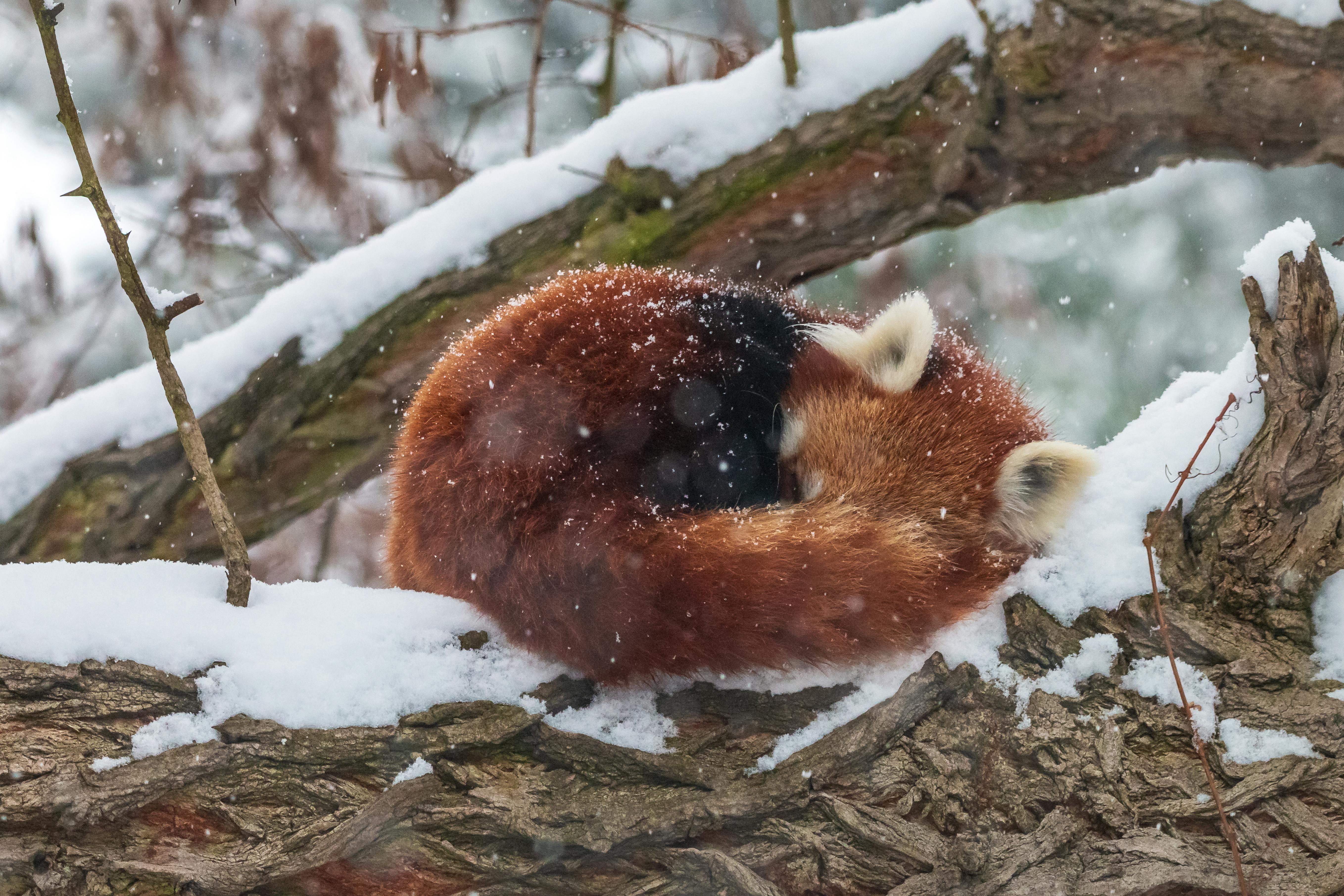
There is no other animal like the red panda. Because of its brightly coloured fur, the people living in its habitat also call it the “fire fox”. Unfortunately, the red panda is endangered, partly due to deforestation. As coordinator of the global population management programme, Rotterdam Zoo is committed to protecting the red panda, both in zoos and in the wild.
Ailurus fulgens
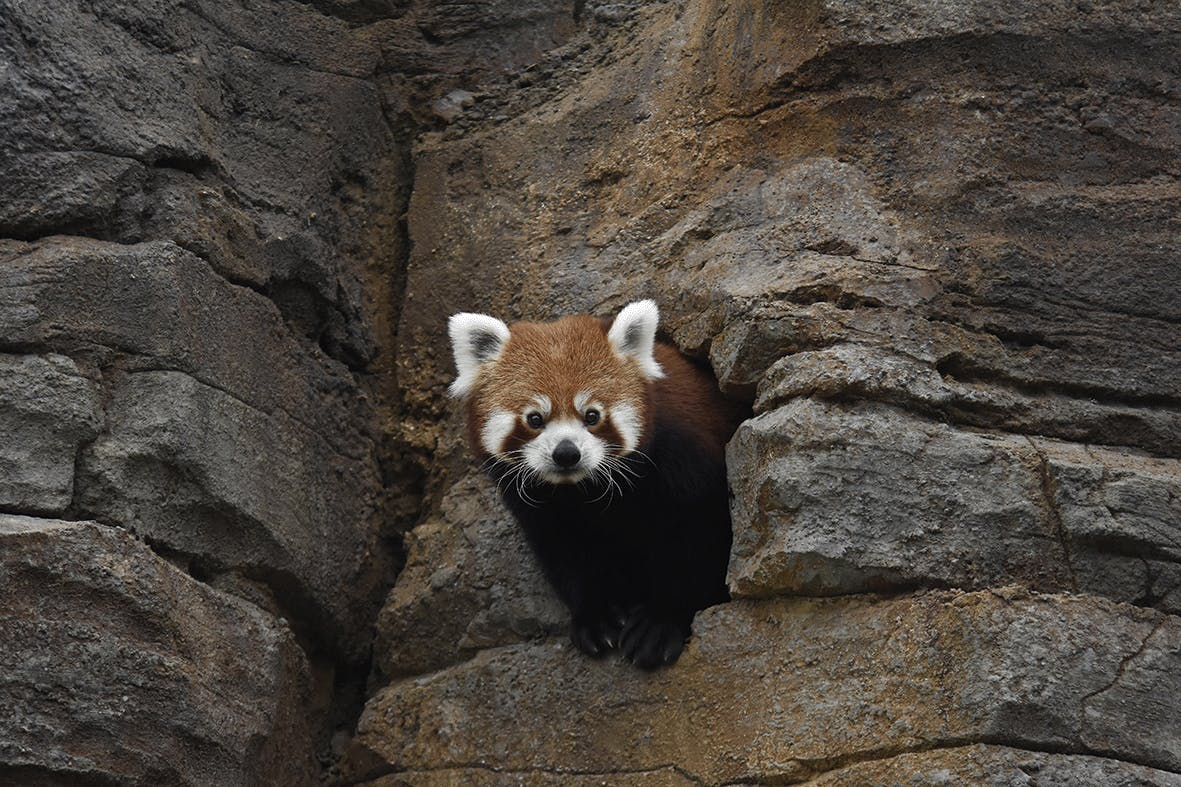
14 years
25 centimetres
50 - 64 centimetres
3 - 5 kilograms
Red pandas are recognisable by their red fur, fluffy striped tail and black belly and paws. Their face has a kind of red and white “mask”. This has a special function: the red stripes running from the eyes to the corners of the mouth keep the sunlight out of their eyes. In other words, they have built in sunglasses!
The red panda does not belong to the same family as the giant panda. Red pandas are more closely related to raccoons, skunks, martens and otters. The similarity between the pandas lies mainly in their diet.
The red panda is found in the Himalayas, including China, Myanmar, Tibet, India, Bhutan and Nepal. It lives in montane forests at altitudes of up to 5 kilometres with sufficient bamboo to eat. Red pandas are skilled climbers: the soles of their feet are extra rough, allowing them to “stick” to trees. Their thick fur keeps them warm during the cold winters in the high mountains; when they sleep, they also wrap their tails around themselves for extra warmth.
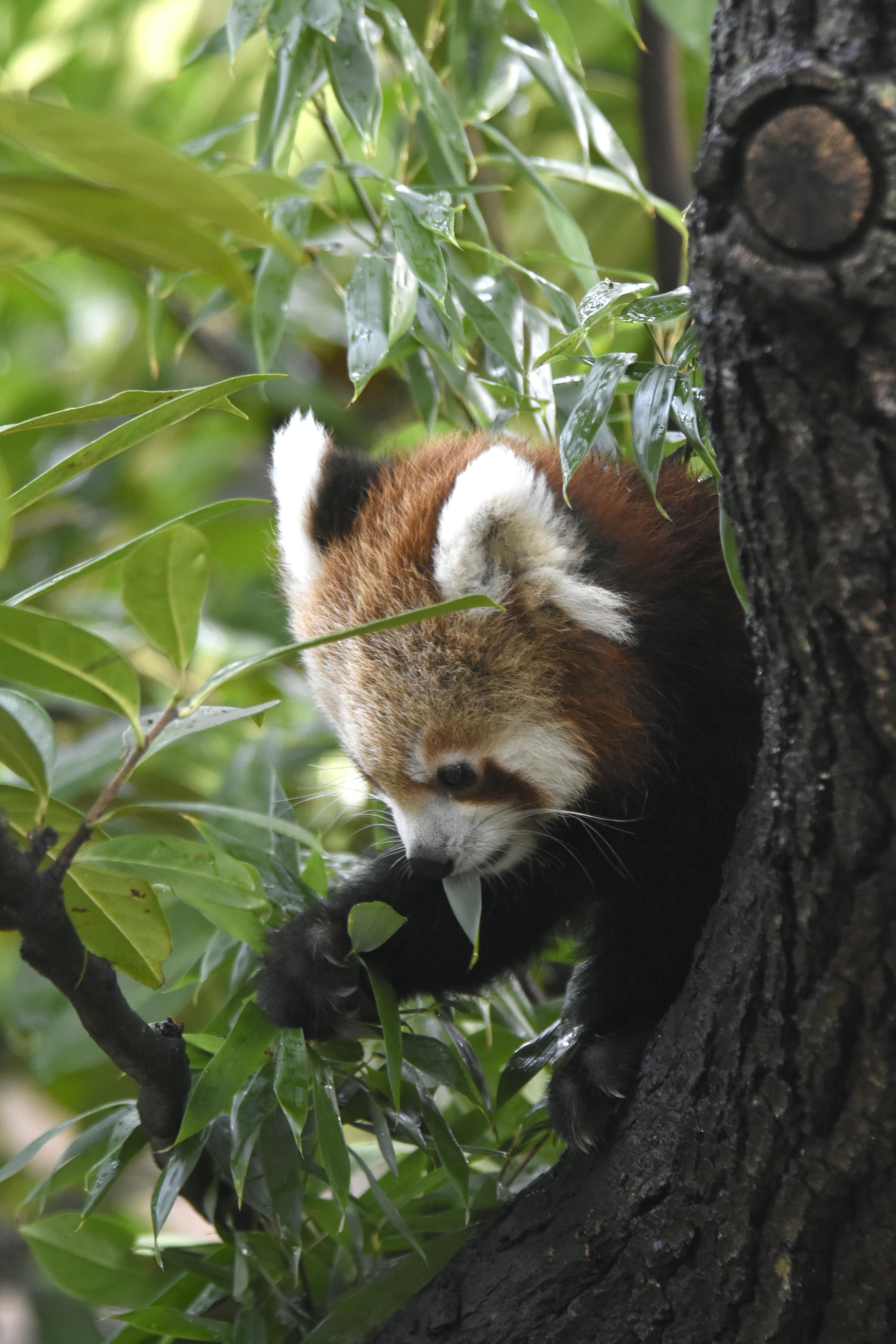
Red pandas are true bamboo eaters. To grasp bamboo shoots properly, they have a “sixth finger”: a protrusion on their wrist. Special ridges on their tongues also help them to grasp and eat the leaves. The red panda is one of the few mammals in the order of carnivores that eats a largely plant-based diet. However, red pandas sometimes also hunt small mammals, birds and lizards.
At Rotterdam Zoo, the red pandas are fed homegrown bamboo that is pruned by our botanical team. The keepers also sometimes give them grapes, for example as a reward during a medical check-up.
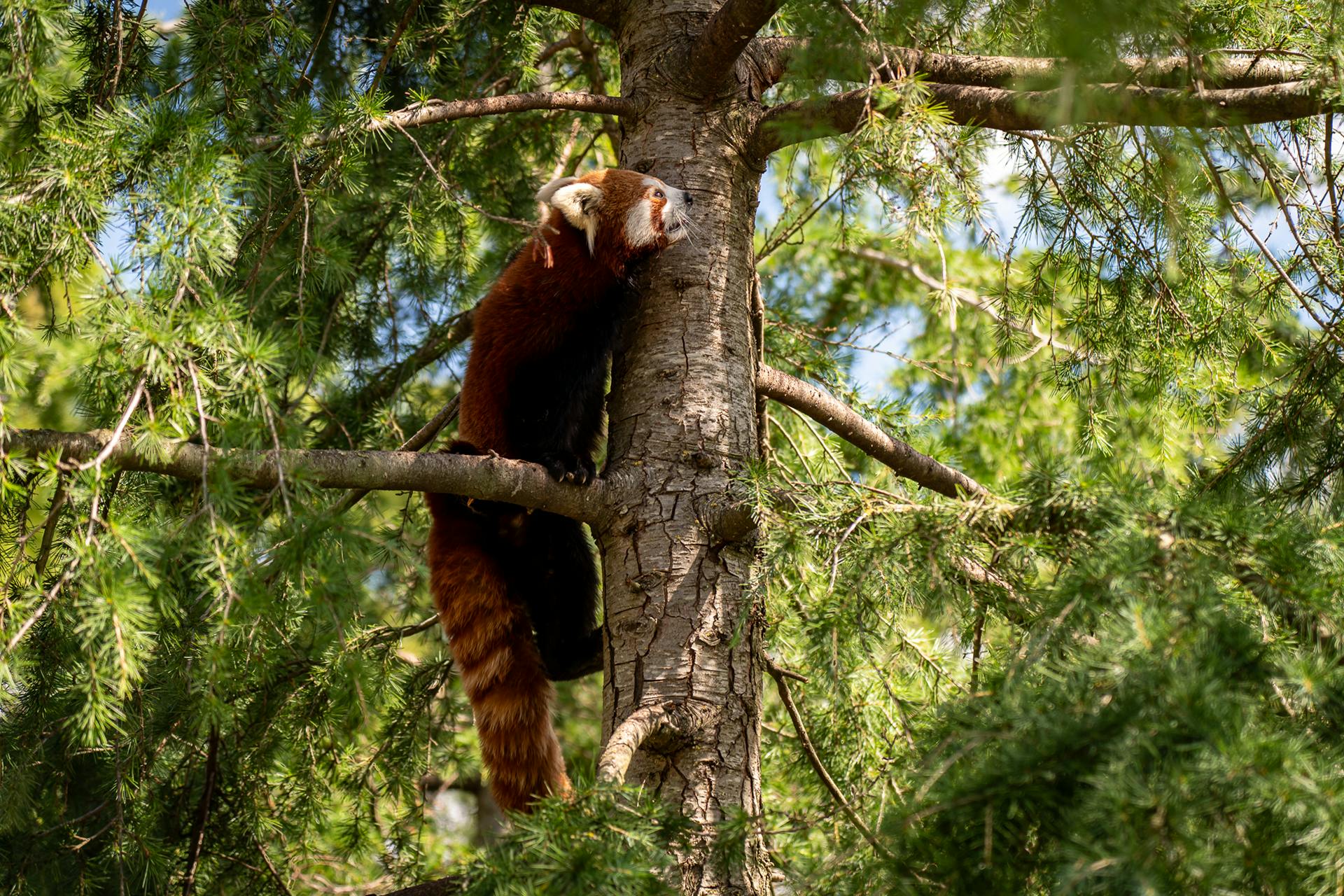
Red pandas are solitary animals. This means that they spend most of their lives alone. They mark their territory with scents from glands next to their anus and use high-pitched sounds to communicate with other red pandas. This allows them to know which areas are best to avoid. Adult pandas only seek each other out during the mating season.
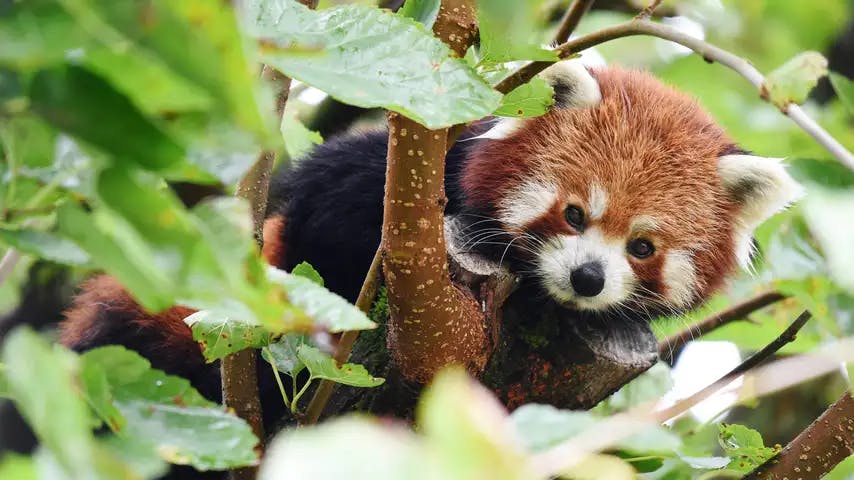
The mating season for red pandas is usually between January and March. During this period, pandas leave extra scent marks and actively search for traces of other pandas. Once two red pandas have found each other, they stay together for around 12 to 36 hours to mate. After that, they go their separate ways and return to their own territory.
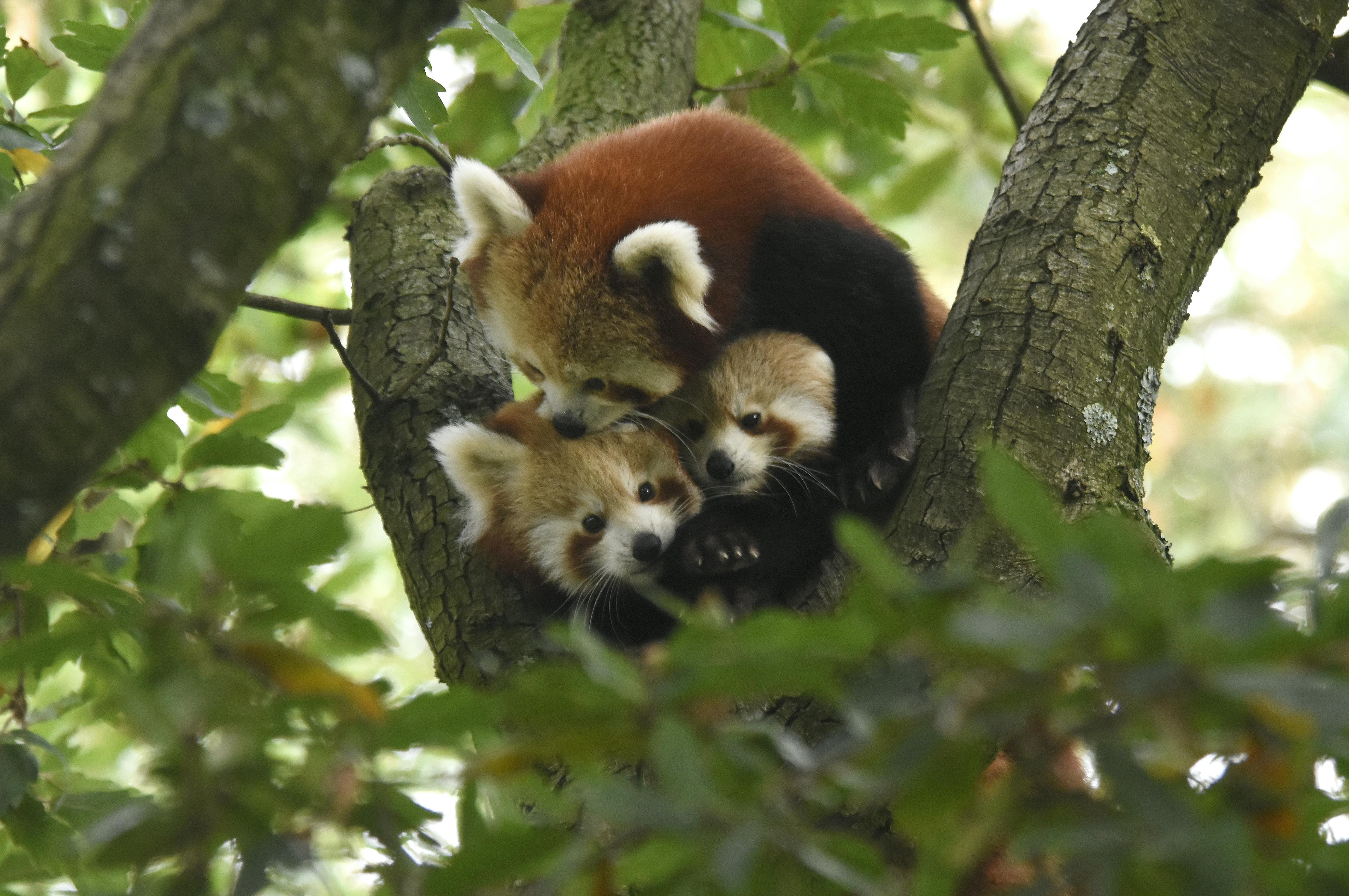
When a red panda is about to give birth, she looks for a hollow tree or a small cave as a safe nesting place. At birth, the cubs are tiny: they weigh about 120 grams! It takes a week before they start moving and their eyes only open after three weeks. When they are about three months old, they leave their nest for the first time to explore the outside world. After that, they grow quickly: it takes just a year for a panda to become fully grown.
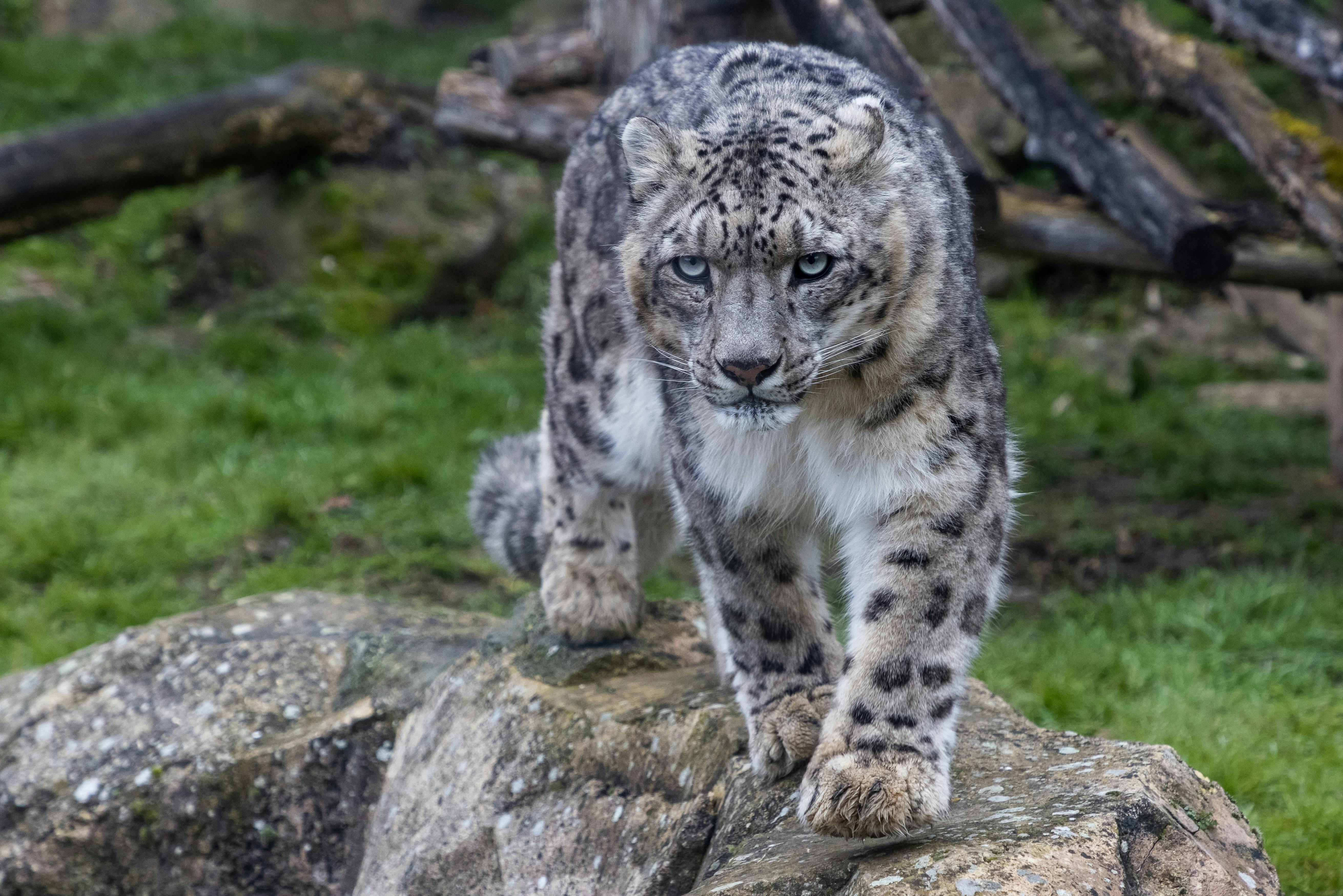
Red pandas are sometimes hunted by snow leopards, martens and birds of prey. Fortunately, the tall trees usually provide a safe hiding place. Although you might not expect it, the panda's bright red fur is hardly noticeable. Its dark belly also blends in well with the sunlight from below.
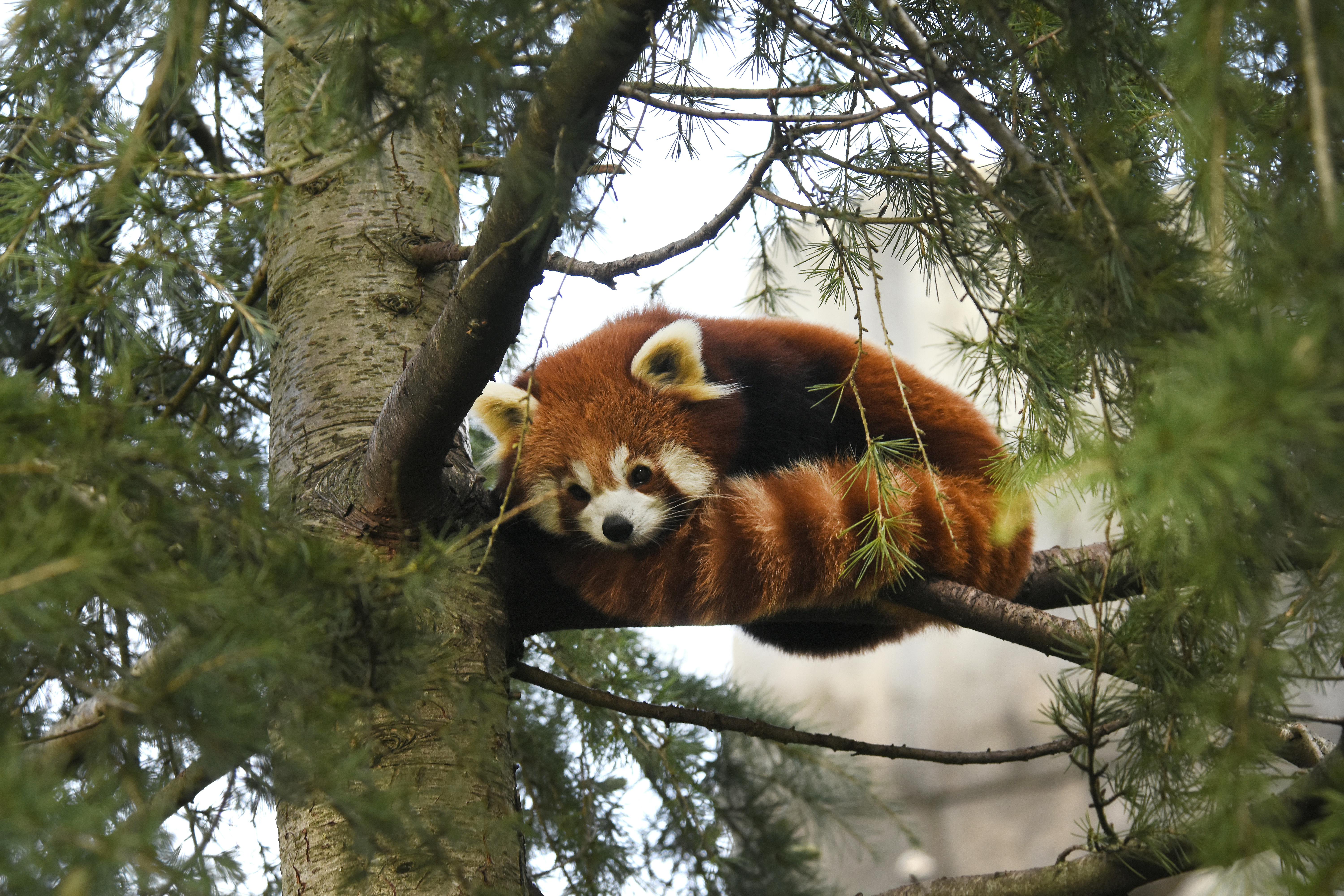
The red panda's habitat is under pressure, mainly due to deforestation. The local population desperately needs the wood for cooking and to keep warm. As a result, large areas of mountain forest have disappeared. Red pandas are also sometimes captured for their fur, their meat or to be kept as pets (for which, like other wild animals, they are unsuitable). For all these reasons, the red panda has been classified as “Endangered” in the wild.
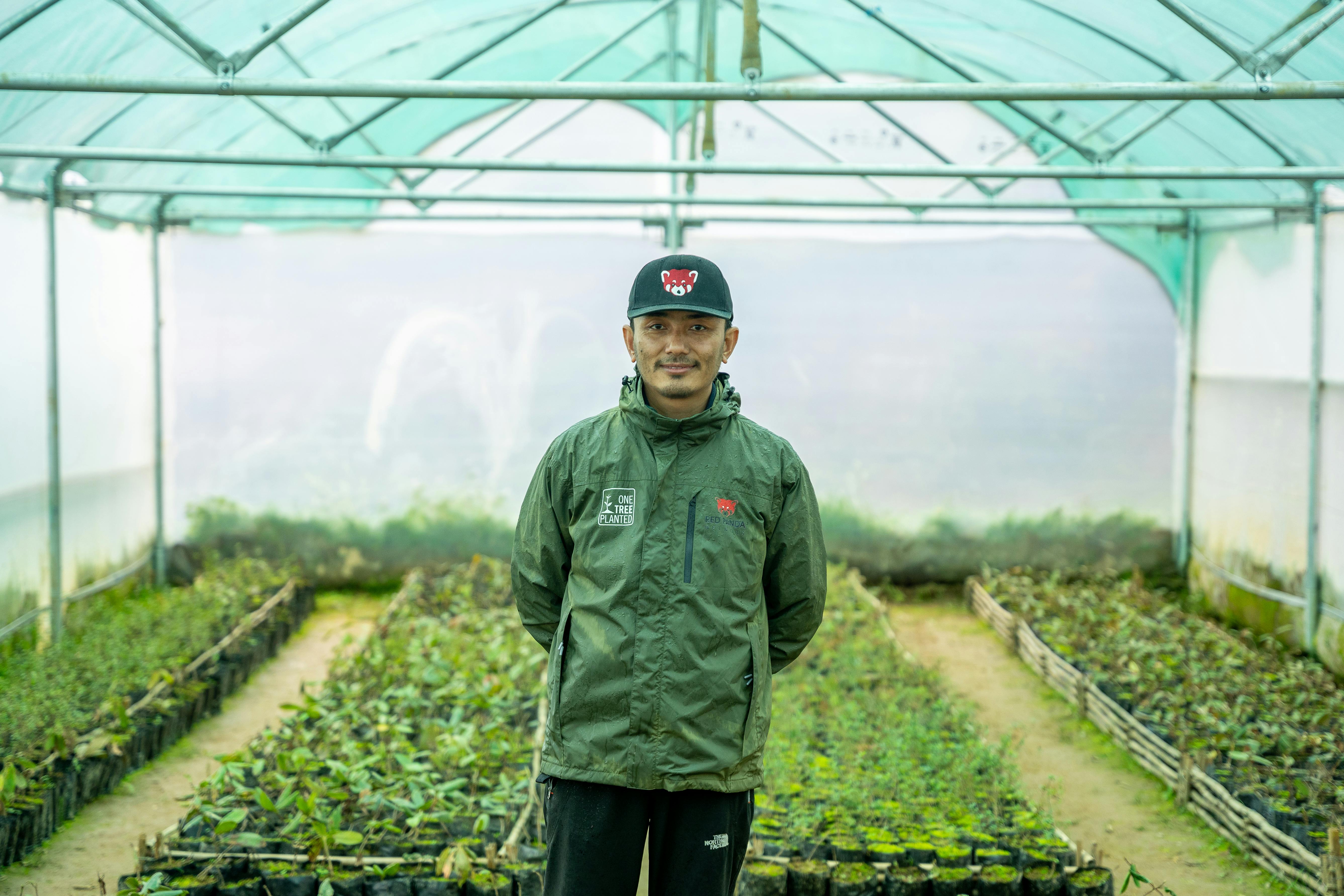
To save the red panda, Rotterdam Zoo works together with Red Panda Network to protect their habitat and help the people who live there. By informing and supporting the local population, we empower them to restore their natural environment. For example, we plant new montane forests together. In addition, we fund tools and boots to improve working conditions. We are also contributing at home by purchasing more efficient stoves. This means that the Nepalese need to chop less wood for cooking, so more trees remain! The forests contribute to the physical and mental wellbeing of both people and pandas.

Scientific research teaches us a great deal about these endangered animals, enabling us to better protect them in their natural habitat. At Rotterdam Zoo, for example, unique GPS collars have been developed to understand how pandas move in the wild. The GPS collars were first tested on the pandas in the zoo to ensure that the method worked properly before the collars were used in the wild. In addition, we study the pandas' DNA and look at the diseases they are susceptible to. In this way, we try to keep the pandas as healthy as possible!
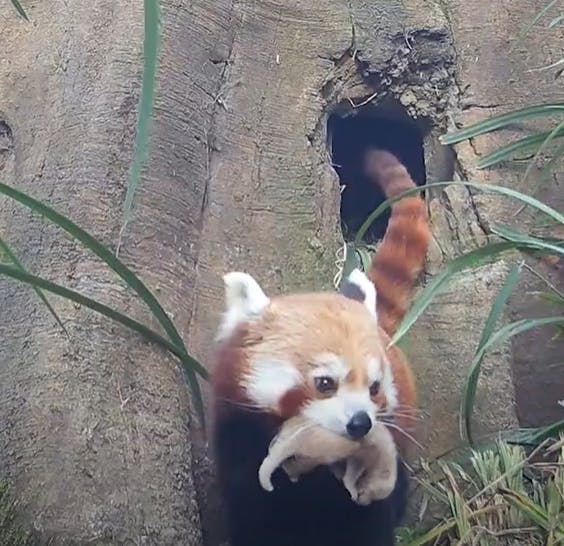
Rotterdam Zoo coordinates the European and global population management programme for red pandas. Based on the pedigree of pandas in zoos, the coordinator determines which pandas are best suited to be paired for healthy offspring. These cubs are then transferred to other zoos, where they form the next generation. Meanwhile, offspring of red pandas from zoos have even been successfully released back into the wild! In this way, we are bringing the red panda back to its restored habitat.

For €2.50 you can contribute to a healthy meal for the red panda.

For €5 you contribute to a better environment for the red panda.
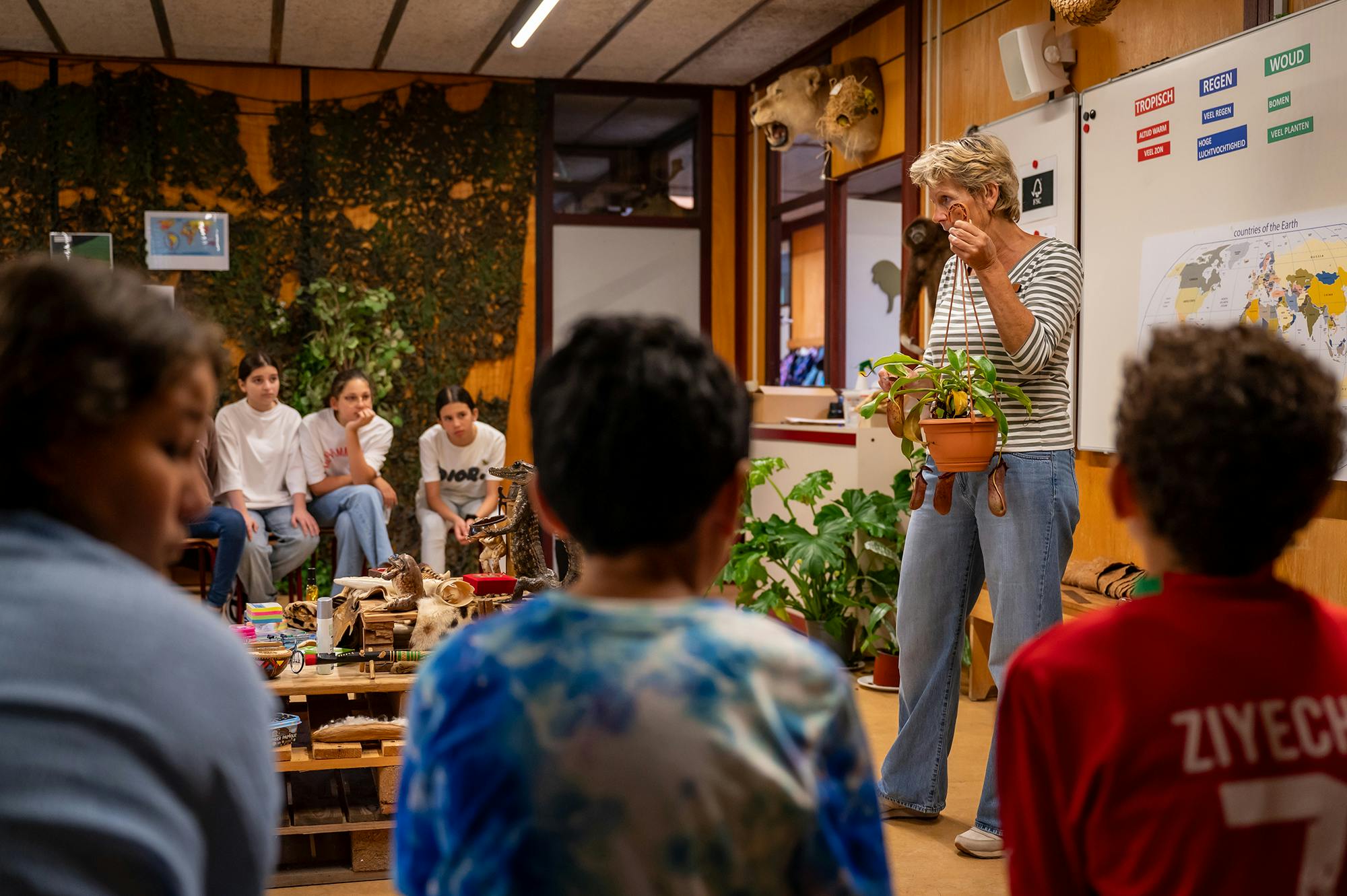
For €10 you contribute to education about the red panda.
